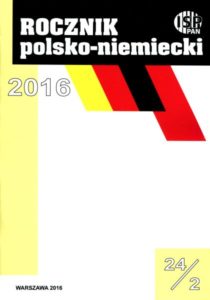Materialne ślady zbrodni. O "obcych" grobach i cmentarzach wojennych
The Material Traces of Crime. The War Graves and Cemeteries of ‘Strangers’
Author(s): Joanna SzymoniczekSubject(s): Politics / Political Sciences, Politics, WW II and following years (1940 - 1949)
Published by: Instytut Studiów Politycznych PAN
Summary/Abstract: The construction of war cemeteries always evokes emotions. After the end of an armed conflict, each of which brings death of civilians and soldiers, people continue to think about the fallen and those who fought on their side. When conducting exhumations, inhumations and identification of bodies after the war, the authorities must also deal with the problem of the burial of enemy soldiers. The final resting place of the fallen is usually where they perished. Sometimes these are impressive cemeteries, maintained by local authorities, population and the state for whom the dead soldiers sacrificed their lives. Another time, it is only a forgotten place, somewhere near a dirt road or in the woods, where someone may light a candle. It may also be a mass grave overgrown with long grass, or covered by a newly built park. No one even knows who is buried there. The states on whose territory the grave sites of victims of wars and totalitarian violence are located are required to ensure their legal protection. War graves and cemeteries are now managed by municipalities, associations or social organizations. In order to minimize the controversy surrounding these sites, efforts are taken to preserve the neutral appearance of erected monuments, which are usually limited to simple grey crosses. The construction of war cemeteries always evokes emotions. These places are designed to remind the living of the past and confront them with the consequences of wars and violence. It seems that European societies are now mature enough to ensure that humanitarian reasons are stronger than prejudice and a sense of injustice.
Journal: Rocznik Polsko-Niemiecki / Deutsch-Polnisches Jahrbuch
- Issue Year: 2/2016
- Issue No: 24
- Page Range: 214-233
- Page Count: 20
- Language: Polish

